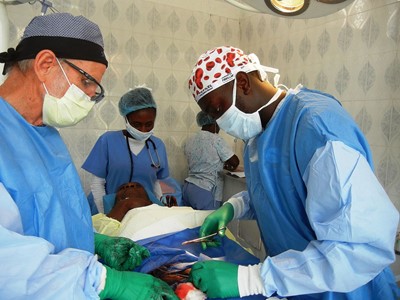
Training the Trainers
“That is an amateur deception always done when the enthusiasm for believing you can do ‘just one more case’ of the additional ‘last patients’ which will keep on coming forever,” writes Dr. G in a journal entry. Mission to Heal has three main objectives. We seek to:
1. Provide surgical operations and medical care to those who need it, who have limited or no access to it, and who cannot afford it.
2. Equip medical professionals with the heart and hands to function in needy and poorly-resourced conditions.
3. Equip locals to provide the medical care so that the community attains a greater degree of self-sufficiency.
Our third principal aims to combat the “never-ending patient” dilemma posed by Dr. G in his aforementioned journal entry. Short term missions are better suited for situations that require immediate care: emergencies and crisis situations caused by natural disasters. However, the short-term mission is by nature, short. So, much like duct tape on a broken headlight or a band-aid applied on a large wound, short-term missions provide temporary relief for a bigger problem.
Mission to Heal seeks to provide long-term solutions by creating sustainable healthcare legacy in the countries we visit. Our goal is to develop ongoing surgical care to those in need by “training the trainers.”
This is a process in which Dr. G tends to patients in tandem with training local medical professionals. By the time our team leaves, his apprentices can continue providing surgical care to patients in the area. We don’t just heal people. We teach people to heal. Rather than creating a persistent dependency on foreign aid, M2H wants to merely act as a catalyst for self-sustaining healthcare in these countries.
It’s undeniable that there will never be “one last patient.” But in our mission to heal and create sustainable healthcare legacies in these countries, we can, at the very least, treat “one more patient.”